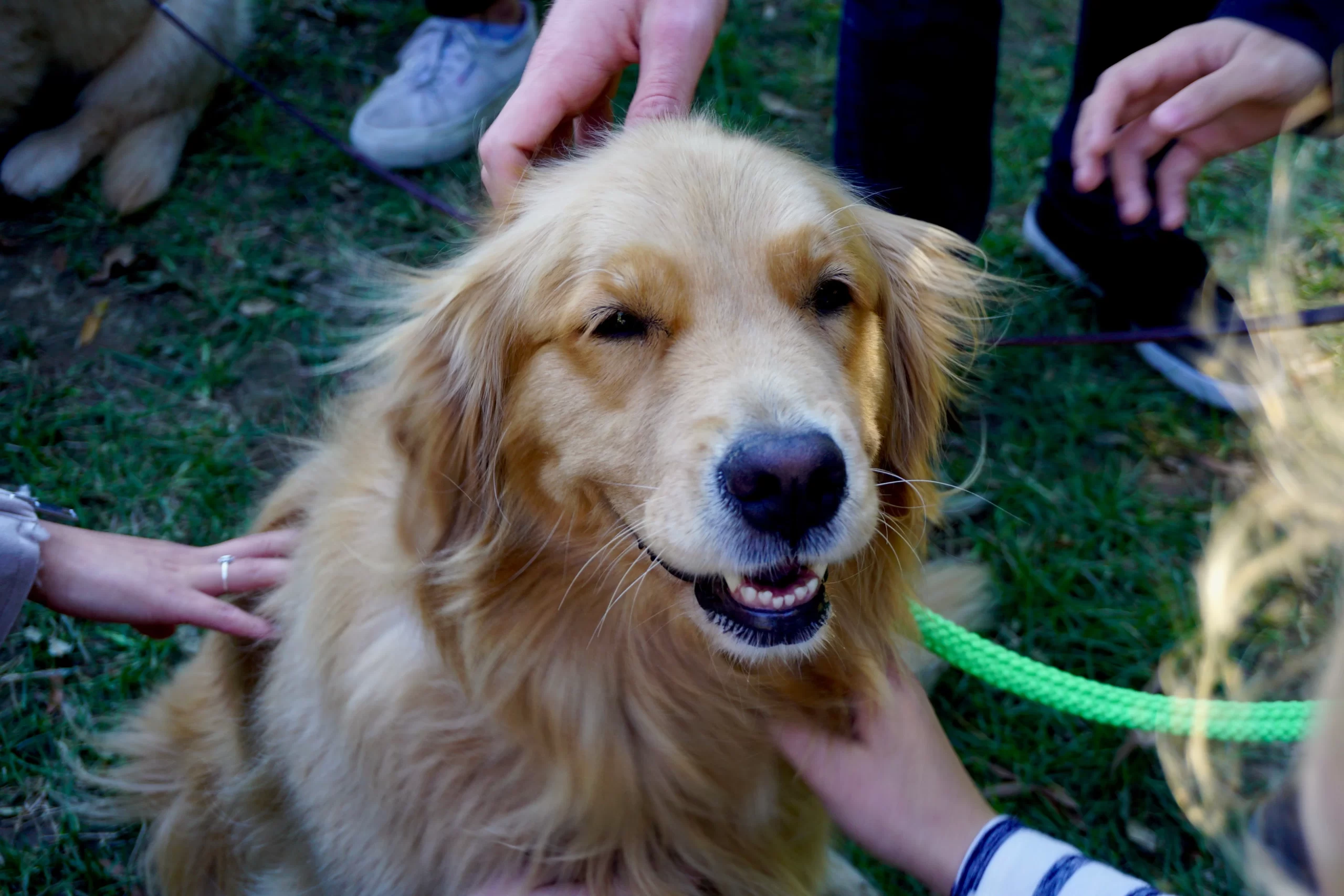Our canine pals are a constant source of companionship, loyalty, and unconditional love. While many become incredibly intuitive and in tune with our needs over time, not all of them are cut out to be true therapy dogs. So what exactly what makes a dog perfect candidate for canine therapy training? Let’s find out.
Not Born, Not Made, but Shaped
There is a little bit of debate about whether therapy dogs are born or made. The reality is that while your dog may have a great natural temperament and be loyal to you as its human, not all dogs qualify. Sure, it can be easy to teach a dog to sit, lay, stay, or roll-over. But it’s not as easy to teach a pup to completely block out children, adults, or other animals and not be distracted by the noises and movements around them.
The best therapy dogs seem to be those who are happy to be around both people and other animals — or at least don’t mind being around other animals. While adoration of people is important, they also need to be able to control their emotions. A dog who simply can’t stop jumping on or licking every new person he meets, will not a good therapy dog make.
Most dogs can be trained to behave in a certain way around people. Not all dogs can be trained to curb their excitement when they meet new people. While they can learn how toperform certain commands, they can’t be taught to be intuitive to a person’s needs — especially when it comes to humans who may be experiencing a physical or emotional crisis.
Canine Aptitude Testing
Researchers at the University of Arizona are working on a series of cognition tests that will make it easier to determine which dogs are capable of training to become working dogs and which just aren’t cut out for the task. This could prove incredibly beneficial; the organizations responsible for providing dogs would spend a lot less time and money on training dogs that don’t make the final cut. The process of getting trained dogs to the people who need them will then become faster and far less expensive.
According to Evan MacLean of the Arizona Canine Cognition Center, people have focused more on a dog’s temperament than their cognitive abilities. While it’s important for a dog to be able to react in a difficult situation, it’s also important for a dog to be able to problem-solve on his own when faced with a challenge.
To help narrow it down, the university’s study used a series of game-based cognitive tests to determine if the dog has what it takes to be flexible in solving random problems. Because these skills are usually taught later in training, a lot of time and money can be wasted before a dog is eliminated.
The study looked at dogs being trained for therapy and assistance as well as canine explosive detection dogs. One fact noted is that the skills needed to successfully complete each of these tasks is very different. A dog who isn’t cut out for human therapy may do very well as a bomb-sniffing member of the police force.
MacLean’s study took a total of 386 dogs. It applied cognitive tests before they began their six-month training programs, instead of after. They were able to predict, with 86 percent accuracy, which of the dogs would end up in the top 25 percent of their class.
Qualities of Great Therapy Dogs
While those results were based on only one study, the results do show significant promise. Not only can dogs be more efficiently filtered and trained, but they can also be sorted and placed into the right homes with more accuracy.
Studies aside, there are a few signs your dog may make an exemplary therapy dog. Here are some of the most common:
- Your dog tends to prefer people over other animals. He doesn’t mind strangers, especially those who appear different than his family or handler — people with physical disabilities who look atypical or may move in an erratic fashion.
- Your dog has great manners and obeys commands. She doesn’t pull at her leash and she listens to her handler’s commands, even in environments full of distractions. She won’t go for pieces of dropped food without permission.
- Your dog is patient and doesn’t mind being around children. Even if your dog may not be training to work with a child, he will encounter them along the way. Not all children understand they should not touch working dogs, so your dog needs to have a temperament that lets him remain in control and focused without getting excited.
- Your dog doesn’t mind being touched. This is more important if she is training to be an emotional support animal as opposed to an emergency medical response dog. People with different abilities may have unique ways of touching (lighter, firmer, faster, and slower), and may even try to hug the dog.
- Your dog tolerates the presence of other dogs, but can ignore them on command. He is capable of healthy socialization but will remain focused on his human companion unless given permission to do otherwise.
- Your dog is confident and doesn’t spook easily. This is important for dogs who may visit medical settings where there is beeping machinery that can go off with no warning. Even through sudden coughs, sneezes or medical emergencies, she needs to remain calm.
- Your dog is in good health and is up to date on his vaccinations. He needs to be able to tolerate regular grooming, including nail cutting, to prevent harm to those he is visiting.
It doesn’t matter if your dog is training for police service work, as an emotional support animal or as a therapy dog; what he needs most is great manners and a good disposition. Cognitive testing is simply a more accurate judge of those skills along the way. It helps to determine whether a dog has the right personality and temperament with a high level of certainty. Those basic attributes go a long way in determining a dog’s success in training.

